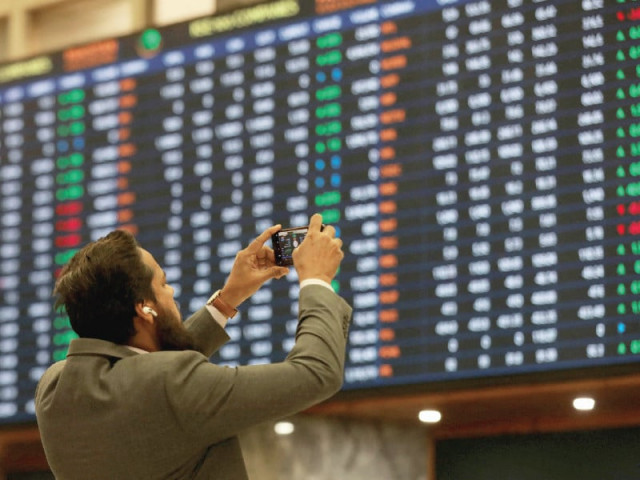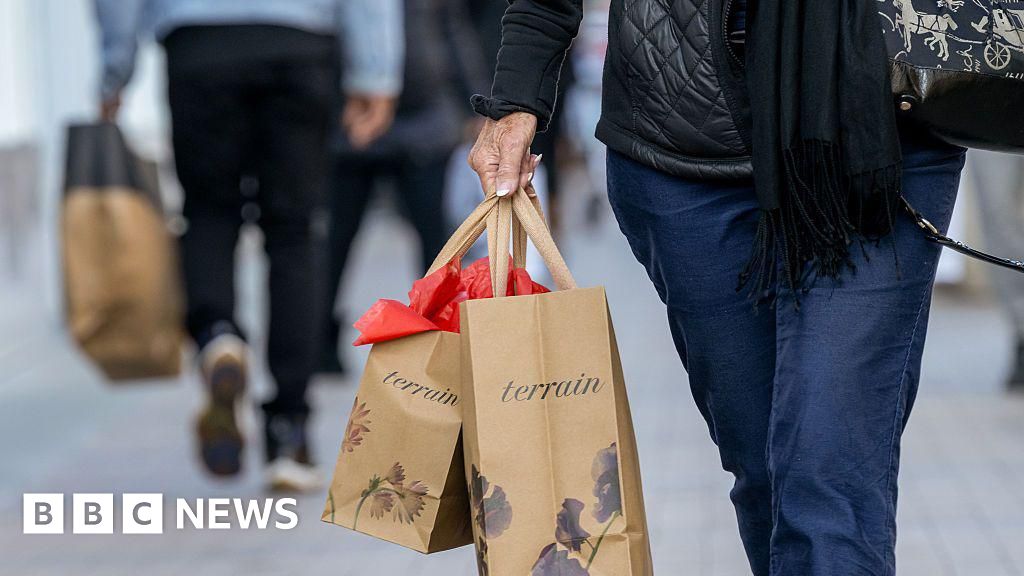Business
PSX extends gains over external debt clarity | The Express Tribune

KARACHI:
The bullish trend continued at the Pakistan Stock Exchange (PSX) on Tuesday as the KSE-100 index advanced nearly 800 points in a rally reflecting a stable policy rate and government’s ability to meet external debt obligations. Notably, the index reclaimed the 156,000-point level while building on Monday’s successful defence of a key support zone.
Pakistan has to repay external debt worth $26.1 billion in FY26 comprising principal loans of $22 billion and interest costs of $4.1 billion. So far, $3.5 billion worth of obligations have been met through $1.5 billion in repayments and $2 billion in rollovers, leaving $22.5 billion, which is due to be repaid over the remaining period of the current fiscal year.
Adding to the momentum, the State Bank of Pakistan (SBP) governor reiterated that all external obligations, including a $500 million bond maturity, would be met on time without straining the foreign reserves.
KTrade Securities, in its market wrap, mentioned that the PSX closed another session on a positive note as the benchmark KSE-100 index gained 796 points (+0.51%) to settle at 156,181. The rally was supported by strong performances in stocks of Meezan Bank, TRG Pakistan, Oil and Gas Development Company, Hub Power, Pakistan State Oil, Mari Energies and The Bank of Punjab.
The report largely attributed the index’s growth to the SBP’s decision to maintain policy rate at 11%, which was welcomed by the market as a prudent and stabilising measure.
Trading activity remained robust, with total volumes reaching 1,356 million shares. The resilience at the PSX reflects investor confidence in Pakistan’s long-term economic prospects, supported by improving corporate earnings.
However, some short-term consolidation is likely in the coming sessions as the market prepares for futures contract rollover next week, KTrade predicted. Arif Habib Limited remarked that the PSX regained the 156,000 level following a successful test of support on Monday.
Some 67 shares rose while 31 fell, where Meezan Bank (+2.64%), TRG Pakistan (+10%) and Oil and Gas Development Company (+1.37%) contributed the most to index gains. On the flip side, Fauji Fertiliser (-0.79%), MCB Bank (-0.5%) and Aaskari Bank (-1.85%) were the biggest drags, it said.
AHL mentioned that the government’s external debt repayments for FY26 stood at $26.1 billion including $4.1 billion worth of interest and $22 billion in principal amount. Of the total, $3.5 billion has been managed – $1.5 billion repaid while $2 billion rolled over. Around $22.5 billion is due in the remaining months of the current fiscal year.
Additionally, the SBP governor expressed confidence that all repayments would be met on time without straining reserves and confirmed that the $500 million bond maturity would be repaid without impacting the foreign currency holdings. AHL concluded that the KSE-100 index remains on track to hit 158k in the near term.
Overall trading volumes jumped to 1.4 billion shares versus Monday’s tally of 857.6 million. Traded value was recorded at Rs43.3 billion.
Shares of 483 companies were traded. Of these, 280 stocks rose, 178 fell and 25 remained unchanged. WorldCall Telecom was the volume leader with trading in 125.7 million shares, gaining Rs0.09 to close at Rs1.66.
Business
Tariff jitters: US consumer confidence slips in December; inflation and jobs worries deepen – The Times of India

US consumer confidence weakened in December, sliding to its lowest level since President Donald Trump rolled out sweeping tariffs earlier this year, as households grew more anxious about high prices, trade levies and job prospects, according to a survey by the Conference Board.The Conference Board said its consumer confidence index fell 3.8 points to 89.1 in December from an upwardly revised 92.9 in November, AP reported. The reading is close to the 85.7 level recorded in April, when the Trump administration introduced import taxes on key US trading partners, AP reported.Consumers’ assessment of current economic conditions saw a sharper drop. The present situation index fell 9.5 points to 116.8, reflecting growing unease about inflation and employment conditions. Write-in responses to the survey showed that prices and inflation remained the biggest concern for consumers, alongside tariffs.Short-term expectations for income, business conditions and the labour market were little changed at 70.7, but remained well below 80 — a threshold that can signal a recession ahead. This was the 11th straight month that expectations stayed under that level.Perceptions of the job market also weakened. The share of consumers who said jobs were “plentiful” fell to 26.7% in December from 28.2% in November, while those who said jobs were “hard to get” rose to 20.8% from 20.1%.The softer sentiment follows recent labour market data showing mixed signals. Government figures released last week showed the US economy added 64,000 jobs in November after losing 105,000 jobs in October. The unemployment rate climbed to 4.6% last month, its highest level since 2021.Economists say the labour market is stuck in a “low hire, low fire” phase, as companies remain cautious amid uncertainty over tariffs and the lingering effects of high interest rates. Since March, average monthly job creation has slowed to about 35,000, down from 71,000 in the year ended March. Federal Reserve chair Jerome Powell has said he suspects those figures could be revised even lower, AP reported.
Business
Government waters down farm inheritance tax plan

Kate WhannelPolitical reporter
 PA Media
PA MediaGovernment proposals to tax inherited farmland have been watered down, with the planned threshold increasing from £1m to £2.5m.
The climbdown follows months of protests by farmers and concern from some Labour backbenchers.
At last year’s Budget, ministers said they would start imposing a 20% tax on inherited agricultural assets worth more than £1m from April 2026, ending the 100% tax relief that had been in place since the 1980s.
In an announcement put out after MPs had left Parliament for the Christmas recess, Environment Secretary Emma Reynolds said: “We have listened closely to farmers across the country and we are making changes today to protect more ordinary family farms.”
“It’s only right that larger estates contribute more, while we back the farms and trading businesses that are the backbone of Britain’s rural communities, ” she said.
Head of the National Farmers’ Union Tom Bradshaw welcomed the change, telling BBC Radio 5 Live it “takes out many family farms from the eye of a pernicious storm”.
Gavin Lane, president of the Country Land and Business Association, said: “The government deserves credit for recognising the flaws in the original policy and changing course.
“However, this announcement only limits the damage – it doesn’t eradicate it entirely.
“Many family businesses will own enough expensive machinery and land to be valued above the threshold, yet still operate on such narrow profit margins that this tax burden remains unaffordable.”
Ben Ardern, a farmer from Derbyshire, told the BBC said it was “a step in the right direction”.
He said the government should “drop it [the tax] for family farms… and just tax the people who have got the money to tax.
“The big corporations who have just buried money into land – they’re not farmers, they have just done it to avoid tax. Farmers haven’t bought land to avoid tax, we’ve bought land to farm it and grow food.”

In the 14 months since the initial proposal was announced, there have been regular protests by farmers outside Parliament.
Some Labour MPs in rural areas have also expressed concern. At a recent parliamentary vote on the plan, a dozen backbenchers abstained and one, Markus Campbell-Savours, voted against.
Campbell-Savours was subsequently suspended for voting against the government, meaning he now sits as an independent MP.
Conservative leader Kemi Badenoch said in a post on social media: “This fight isn’t finished.
“Other family businesses are still affected by Labour’s tax raid, and we will keep pushing until the tax is lifted from them too.”
Liberal Democrat spokesperson Tim Farron MP said: “It is utterly inexcusable that family farmers have been put through over a year of uncertainty and anguish since the government first announced these changes.
“We demand that the government scraps this unfair tax in full and if they refuse to, Liberal Democrats will submit amendments in the new year to bring it down.”
Reform UK deputy leader Richard Tice said: “This cynical climbdown – whilst better than nothing – does little to address the year of anxiety that farmers have faced in planning to protect their livelihoods… with British agriculture hanging by a thread, the government must go further and abolish this callous farms tax.”
In her first Budget in 2024, Chancellor Rachel Reeves announced she would be reversing the 100% inheritance tax relief on agricultural assets that had been in place since the 1980s.
The move would have seen inherited agricultural assets worth over £1m taxed at 20%, half the standard inheritance tax rate, raising an estimated £520m annually by 2029.
The government had argued that the change would protect smaller farms while stopping wealthy investors from buying farmland as a tax loophole.
However, it has now stepped back from the original proposal raising the threshold level to £2.5m.
Coupled with an exemption which allows farmers to pass on assets to their spouses tax-free, this new government concession means a couple could pass on up to £5m in qualifying assets, without paying tax.
Above the threshold, a 50% relief will be applied to the remaining assets.
According to the government, the number of estates in the UK expected to pay more inheritance tax in 2026/27 will be reduced from around 2,000 under the original plans to 1,100 under the new proposal.
The climbdown is the latest in a series of U-turns the government has made since being elected in July 2024.
Earlier this year the government eased cuts to winter fuel payments and backtracked on plans to make £5bn of cuts to the welfare bill.
Business
US economy grows at fastest pace in two years

The US economy picked up speed over the three months to September, as consumer spending jumped and exports increased.
The world’s largest economy expanded at an annual rate of 4.3%, up from 3.8% in the previous quarter. That was better than expected, and marked the strongest growth in two years.
The figures offer a clearer picture of the state of the US economy heading into the end of the year, after data collection had been delayed by the US government shutdown.
The report showed consumer spending rising by 3.5%, compared with 2.5% in the previous quarter.
-

 Business1 week ago
Business1 week agoStudying Abroad Is Costly, But Not Impossible: Experts On Smarter Financial Planning
-

 Fashion5 days ago
Fashion5 days agoIndonesia’s thrift surge fuels waste and textile industry woes
-

 Business1 week ago
Business1 week agoKSE-100 index gains 876 points amid cut in policy rate | The Express Tribune
-

 Sports1 week ago
Sports1 week agoJets defensive lineman rips NFL officials after ejection vs Jaguars
-

 Business5 days ago
Business5 days agoBP names new boss as current CEO leaves after less than two years
-

 Tech6 days ago
Tech6 days agoT-Mobile Business Internet and Phone Deals
-

 Entertainment1 week ago
Entertainment1 week agoPrince Harry, Meghan Markle’s 2025 Christmas card: A shift in strategy
-

 Sports5 days ago
Sports5 days agoPKF summons meeting after Pakistani player represents India in kabaddi tournament






